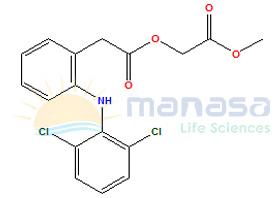For any information Email to: info@manasalifesciences.com
Acetylcysteine belongs to a class of medications known as mucolytic agents, generally used to treat respiratory disorders caused by excessive mucus. Acute respiratory disorders are initially characterized by a dry, unpleasant cough or a burning sensation in the chest due to bronchitis. Then wet mucus forms and sputum is continuously coughed out. Chronic respiratory problems cause dry, unpleasant coughs and wet coughs with mucus. Acetylcysteine acts to thin and loosen phlegm in the lungs, windpipe, and nasal passages. This makes it easier to cough out phlegm. It is used as an antidote for paracetamol overdose.
BRAND NAME:
Acetadote – It contains acetylcysteine as a main ingredient. It is used in the form of injection through intravenous administration. The strength of this dose is 6gr/30ml (200mg/ml) in a single dose vial.
MECHANISM OF ACTION:
In the case of paracetamol overdose, CYP2E1 metabolizes a portion of the drug to produce the potentially deadly metabolite N-acetyl-P-benzoquinone imine. Overdose produces a high level of NAPQI, which depletes glutathione reserves. The free NAPQI binds promiscuously to proteins in hepatocytes, causing cellular necrosis. Acetylcysteine either directly conjugates NAPQI or provides cysteine for glutathione synthesis and NAPQI conjugation.
There have been several hypothesized mechanisms for acetylcysteine's mucolytic action. Acetylcysteine sulfhydryl groups may hydrolyze disulfide bonds in mucin, causing the oligomers to break down and the mucin to lose viscosity. It has also been demonstrated to lower mucin secretion in rat models. It is an antioxidant on its own, but it is also deacetylated to cysteine, which aids in forming the antioxidant glutathione. Antioxidant activity may also modify intracellular redox processes by lowering EGFR and MAPK phosphorylation, which inhibits transcription of the mucin-producing gene MUC5AC.
PHARMACOKINETICS:
Absorption: Inhalation by a nebulizer takes 1 to 2 hours to achieve maximal blood concentration, while oral administration via an effervescent tablet takes about 2 hours.
Distribution: The mean volume of distribution of acetylcysteine is 0.47L/kg
Metabolism: Biotransformation of NAC leads to the formation of metabolites, disulfide, cysteine, and conjugates. Further metabolites lead to the formation of glutathione and other metabolites.
Excretion: In the first 24 hours after taking an oral dose of radiolabelled acetylcysteine, 13-38% of it is retrieved in the urine and 3% in the feces.
PHARMACODYNAMICS:
It has a brief duration of effect because it is administered every 1-8 hours depending on the mode of administration, and it has a broad therapeutic range. Acetylcysteine is used for mucolytic therapy for the treatment of acetaminophen overdose. Patients should be advised about diluting oral solution in cola for flavor masking, hypersensitivity, and upper gastrointestinal hemorrhage.
DOSAGE AND ADMINISTRATION:
Acetylcysteine is commonly used in doses ranging from 600 to 1200 mg daily. People should consult their doctor about the usage of acetylcysteine and the proper dosage.
The injection strength is 200 mg/ml (6gr of acetylcysteine in 30 ml) in a single-dose vial.
Apply aerosolized bronchodilators 10-15 minutes before delivering acetylcysteine via nebulizer.
The nebulizer solution can also be taken orally.
This medication is often breathed into the lungs using a nebulizer. In a hospital or clinic environment, a healthcare professional may provide this drug directly into the lungs via a trachea tube or orally in an emergency. Follow the directions on the medicine label. Dilute with sterile saline or water before inhaling using a nebulizer. You will be taught how to utilize the nebulizer. Use the diluted drug within an hour after mixing. Take your medications at regular times. Do not take your medication more frequently than prescribed. Before using this medication on children, ask your doctor.
DRUG INTERACTIONS:
Do not start, stop, or change the dosage of any medication without first consulting with your doctor. Acetylcysteine has no known serious interactions with other drugs. Moderate interactions with acetylcysteine include
• Activated charcoal
• Mild interactions of acetylcysteine include
• Azithromycin
• Chloramphenicol
• Clarithromycin
• Demeclocycline
• Dichlorphenamide
• Doxycycline
• Erythromycin base
• Erythromycin lactobionate
• Erythromycin stearate
• Minocycline
• Tetracycline
• Vancomycin
CONTRAINDICATIONS:
Acetodote is contraindicated in patients with a previous hypersensitivity reaction to acetylcysteine.
ADVERSE EFFECTS:
The common side effects of acetylcysteine include
• Bronchospasm
• Disagreeable odor
• Drowsiness
• Fever
• Coughing up blood
• Nausea
• Runny or stuffy nose
• Swelling and sores inside the mouth
• Clamminess
• Wheezing
Serious side effects of acetylcysteine include
• Chest tightness
• Bronchoconstriction
• Bleeding
OVERDOSE:
Excessive doses of NAC can damage your cells. If you take very high amounts over a short amount of time, you could damage your kidneys or even die.
Overdose of acetylcysteine can cause seizures, cerebral edema, and brain death.
TOXICITY:
Patients experiencing an overdose may present with vomiting, nausea, bronchospasm, periorbital angioedema, and hypotension. Treat patients with symptomatic and supportive measures. Hemodialysis may remove some acetylcysteine from circulation as it is somewhat protein-bound.
STORAGE:
Keep out of reach of children.
Store unopened bottles at room temperature between 15 and 30°C(59 and 86°F).
If only some bottle is used, store the remaining undiluted medicine in a refrigerator. Use open bottles within 96 hours.
Use diluted medicine within 1 hour.
